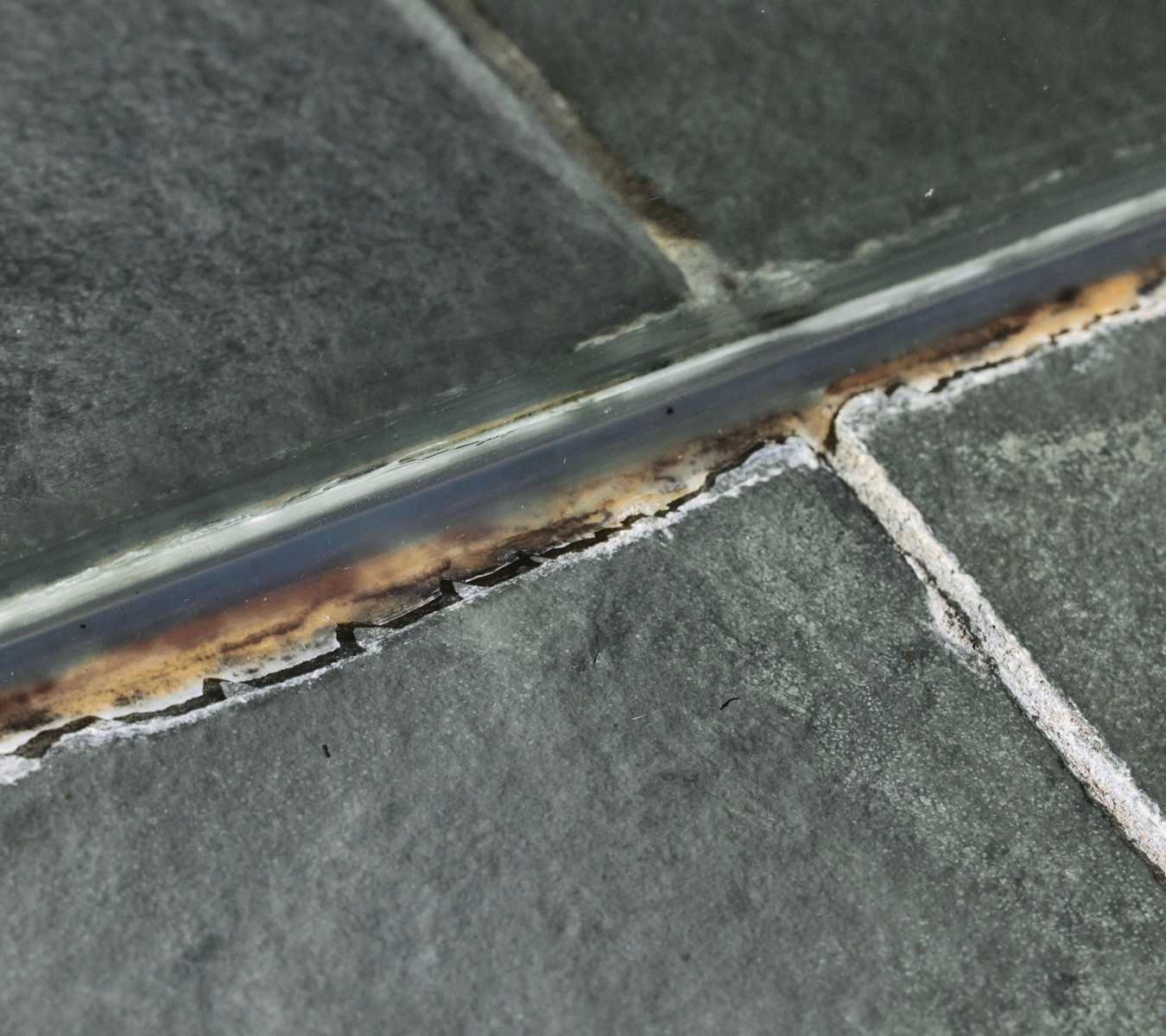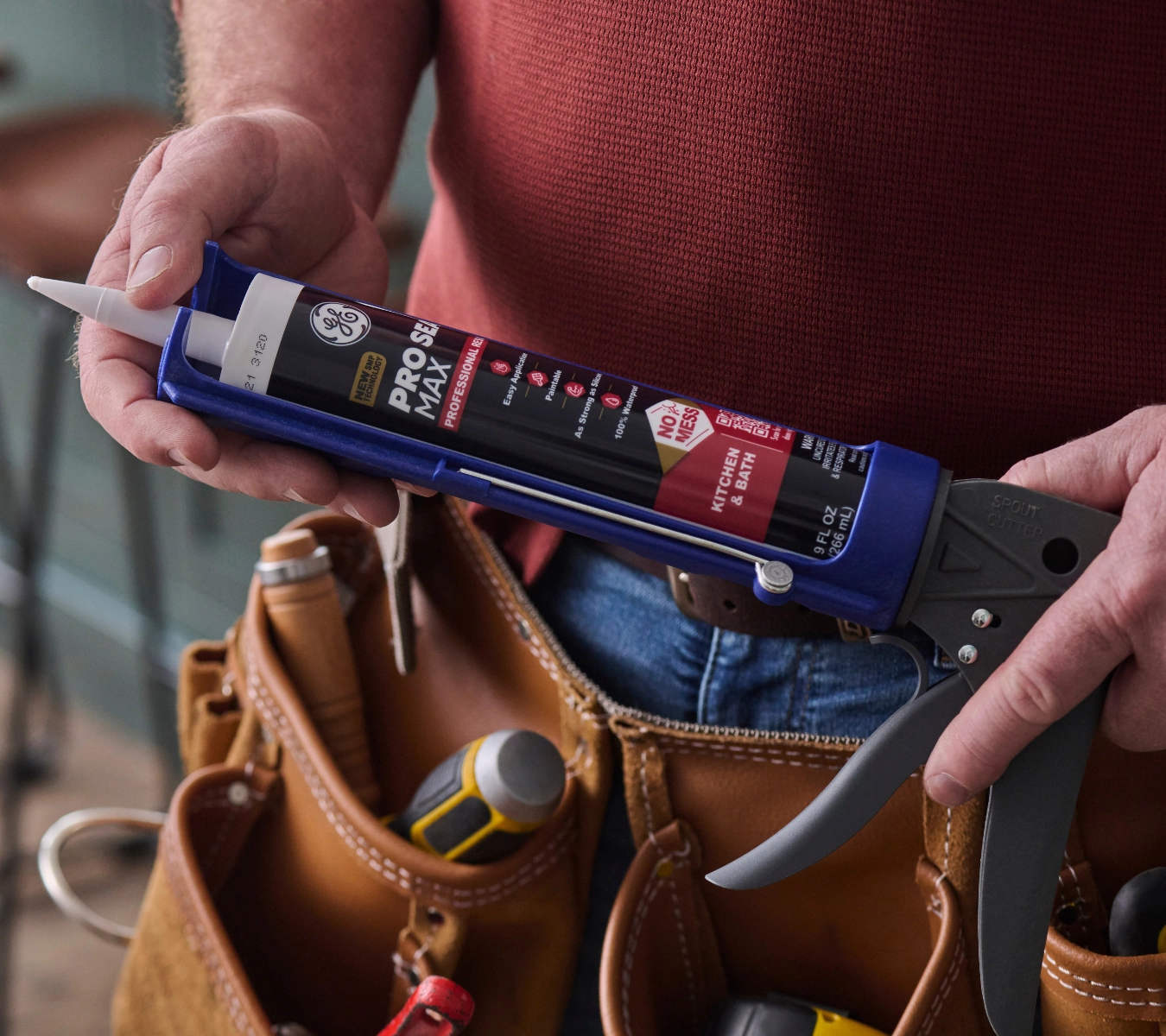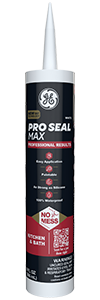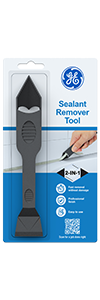Note: This DIY article is provided as a general guide only and is not intended to take the place of product-specific installation procedures; always follow applicable manufacturers’ instructions. Depending on your home’s age and condition, location within the home, and other potential factors, repairs and/or upgrades or other services may be necessary prior to the beginning and/or completion of your project that may involve the services of a home improvement professional. This article does not include advice pertaining to local building codes and/or any related inspections.
If you’ve ever noticed peeling, cracking, or moldy silicone sealant around your sink, tub, or shower, you’re not alone. Bathrooms are among the most demanding environments in your home in terms of moisture and temperature fluctuations, making it crucial to find the right products if you want long-lasting protection. Whether you’re replacing old caulk, sealing a new installation, or touching up problem spots, this guide breaks down how to find the best sealant for bathrooms.
If you’re using anything other than a mold-resistant silicone sealant specifically designed for wet environments, you’re likely to run into trouble sooner rather than later.

Why regular sealants fail in bathrooms
Not all sealants are created equal. Some are formulated for general indoor use and can’t handle the steam, water spray, and temperature changes that define a typical bathroom environment.
Common problems with the wrong type of sealant include:
- Mold and mildew growth: Non-specialized sealants can become breeding grounds for mold and mildew.
- Cracking or shrinking: In high-humidity areas, lower-quality caulks dry out and break apart.
- Poor adhesion: Standard silicone sealant may not adhere well to slick surfaces, such as glazed tile, glass, or acrylic tubs.
If you’re using anything other than a mold-resistant silicone sealant specifically designed for wet environments, you’re likely to run into trouble sooner rather than later.
What to look for in the best sealant for bathrooms
When shopping for the best bathroom sealant, make sure it checks the following boxes.
1. Waterproof protection
A bathroom sealant must withstand daily water exposure without breaking down. This is where waterproof silicone caulk outshines alternatives that may absorb water over time. Waterproof silicone creates a tight, long-lasting seal that prevents water from seeping behind tiles or into drywall, helping prevent rot and structural damage. It remains intact even in areas with constant splashes, such as around sinks, tubs, and shower doors.
2. Mold and mildew resistance
Bathrooms are naturally prone to mold because of the regular humidity they face. That’s why a mold-resistant caulk is essential. These products contain specialized additives that inhibit the growth of mold, helping keep your bathroom looking and smelling fresh.
Without these additives, the sealant can quickly discolor or develop black spots, even if the seal hasn’t failed. Mold-resistant properties are essential in areas such as corners and horizontal surfaces where water tends to accumulate.
3. Flexible and durable
In a bathroom, surfaces expand and contract due to changes in temperature and humidity. For example, a daily cycle includes hot showers followed by cool-down periods. Sealants that dry hard and brittle are likely to crack and pull away from surfaces over time.
Silicone sealant remains flexible after curing, allowing it to move with the building materials and maintain a watertight barrier. This flexibility helps them resist the kind of fractures that lead to slow leaks and hidden damage.
4. Adheres to nonporous surfaces
Glass, porcelain, and many types of tile are considered non-porous, meaning they don’t absorb moisture or adhesives easily. A high-performance silicone caulk is formulated to bond tightly to these kinds of slick surfaces. A high-quality silicone bathroom sealant will adhere to the surface and remain in place, even in steamy, wet conditions. This strong adhesion ensures that your caulk line doesn’t lift or develop gaps over time.

5. Ease of application and cleanup
Ultimately, ease of use is crucial, especially for DIY enthusiasts. The best sealant for bathrooms is one that’s designed for smooth application with minimal mess. They may come in squeeze tubes or be dispensed through a standard caulk gun. Many modern formulas are low-odor and water-resistant shortly after application. Some silicone caulks are also labeled as paintable or quick-drying, which helps speed up your bathroom project without sacrificing quality.
Introducing GE Pro Seal Max Kitchen & Bath
When it comes to sealing tubs, showers, backsplashes, and sinks, GE Pro Seal Max Kitchen & Bath stands out as a top performer. Explicitly designed for high-moisture areas, this bathroom sealant offers:
- Superior mold and mildew resistance
- Excellent adhesion to tile, glass, and metal
- Flexible, waterproof formula as strong as silicone
- Fast curing with long-term durability
- Paintable for a seamless finish
Whether you’re looking for the best tub caulk or a reliable sealant for around the sink, GE Pro Seal Max Kitchen & Bath delivers consistent results that DIYers and professionals can trust.
Application tips for shower caulking and bathroom sealant projects
Want your next sink or shower project to last? Follow these expert tips.
1. Start with a clean surface before applying waterproof silicone caulk
Use the GE Sealant Remover Tool to scrape out old silicone sealant. It’s designed to remove all types of sealant and can be used on various surfaces, including tile. Removing old caulk is essential for a proper application. Afterward, clean the area with a mildew remover and allow it to dry completely before applying the new product.
2. Cut the cartridge or tube to the desired size
Use the GE Cartridge Opener and Smoothing Tool to open the cartridge or tube. This tool will help you snip the nozzle to the desired size, allowing for better control during application. For narrow joints, start small. You can always widen the cut if needed.
3. Apply mold-resistant caulk in a continuous bead
Work slowly and apply steady pressure for a consistent bead. Smooth it with the GE Sealant Smoothing Tool to achieve a clean, professional finish. Alternatively, you can use a gloved finger if you don’t have our tool on hand.
4. Let it cure fully
Avoid using the shower or sink for at least 24 hours (or as directed on the product packaging) to allow the product to cure fully.
FAQ
What’s the best sealant for bathrooms?
Choose a mold-resistant, waterproof product, such as GE Pro Seal Max Kitchen & Bath. It provides long-lasting protection in wet environments and adheres to slick surfaces, such as tile and glass.
How often should I replace bathroom caulk?
Caulk can last several years, but it’s best to inspect it regularly and replace it if you see cracking, mold, or peeling. Catching issues early can help you prevent water damage and maintain a clean finish.
Can I apply fresh silicone sealant over the old bathroom sealant?
It’s not recommended. For best adhesion and mold prevention, use the GE Sealant Remover Tool to strip the old material before applying fresh sealant.
Is there a difference between tub caulk and shower caulk?
No. The most important thing is to ensure the product used is mold-resistant and waterproof. GE Pro Seal Max Kitchen & Bath can handle both applications.
Looking for the best sealant for bathrooms? Find a store near you in the U.S. or Canada that carries GE products.



